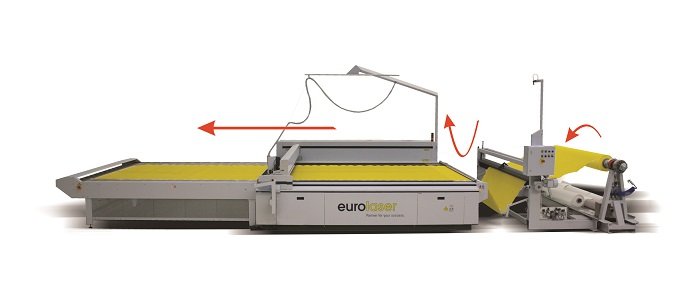
eurolaser installs 1000th large format cutting system
Applications in this market range from technical textiles, such as filter media, to plush material for the toy industry.

28th November 2016
Innovation in Textiles
|
Lueneburg
With its specialisation in CO2 laser systems for cutting of non-metal materials, the Lüneburg-based company eurolaser has been recently exploring the textile market, developing strongly in the past few years, opening up new opportunities for the use of laser cutting systems.
Applications in this market range from technical textiles, such as filter media, to plush material for the toy industry.
Founded in 1994 in Hamburg, eurolaser is one of the market leaders for CO2 laser systems for the cutting of non-metals. The core markets for laser systems include acrylic processing companies, which often produce displays, signs, and inscriptions.
An equally large market is the cutting of plastic films. The main applications include the automotive industry, front panels for household appliances and keyboards. In addition, wood materials, such as multiplex and MDF, belong to typical materials that are cut on eurolaser systems.
The company has been recently expanding its expertise into the textile markets. “More and more, the CO2 laser systems are used for cutting and engraving across all sectors. In order to remain competitive and open up new markets, many companies are moving from conventional production processes to economic production using laser technology,” the company explains.
The level of automation has grown particularly strongly in recent years, the company reports. Especially printed plastics can be identified and automatically contoured by means of an interactive, optical recognition system. Both printed and embroidered or glued labels can be recognised. The laser beam is automatically positioned over the work piece on the basis of the recorded data, so that an exact machining is performed automatically on the printing contour.
Thus, the ingenious system technology is designed to allow a largely fully automatic production process. When processing textile materials, the material is unwound directly from the roll, transported to the processing table and cut.
For synthetic fibres, for example, there is often a special secondary effect, because the laser cut, by its hot energy curling at the cutting edge, on request, creates a fused seam which prevents fringing.
Despite laser-high tech, eurolaser also uses the classic methods of processing. The modular design of the laser systems allows the operator to use up to two mechanical tools parallel to the laser. The company offers the entire high-quality tool range from Zünd Systemtechnik AG from Switzerland.
Apart from routing, countless knives, creasing, marking and punching tools are available. Thus, the advantages of different processing methods can be combined, all on one machine.

Business intelligence for the fibre, textiles and apparel industries: technologies, innovations, markets, investments, trade policy, sourcing, strategy...
Find out more